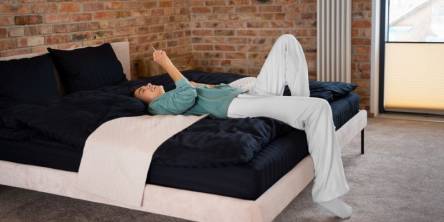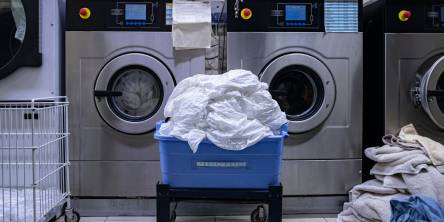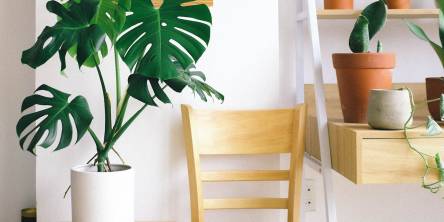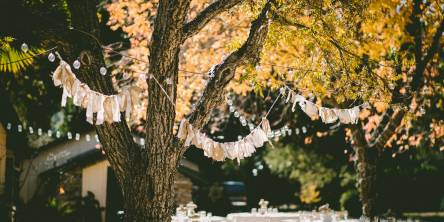The Ultimate Guide to Choosing the Perfect Hot Tub Enclosure

A hot tub enclosure transforms your backyard into a private, year-round oasis, enhancing both the functionality and aesthetic appeal of your spa experience. Whether you’re shielding your hot tub from harsh weather, creating a secluded retreat with a gazebo for sale, or adding value to your property, choosing the right enclosure requires careful consideration of materials, design, functionality, and local conditions. This comprehensive guide explores the key factors to help you select the perfect hot tub enclosure, ensuring it meets your needs while complementing your outdoor space. This guide focuses on providing unbiased, practical advice to inform your decision.
Why Invest in a Hot Tub Enclosure?
A hot tub enclosure serves multiple purposes, making it a worthwhile addition for many homeowners:
-
Weather Protection: Shields your hot tub from rain, snow, wind, and UV rays, extending its lifespan and reducing maintenance.
-
Privacy: Creates a secluded space, ideal for relaxing without prying eyes from neighbors or passersby.
-
Year-Round Use: Insulates against cold weather, allowing you to enjoy your hot tub in any season.
-
Safety: Prevents unauthorized access, especially important for households with children or pets.
-
Aesthetic Appeal: Enhances your backyard’s look, potentially increasing property value.
-
Energy Efficiency: Reduces heat loss, lowering energy costs for heating the water.
With these benefits in mind, let’s explore the steps to choosing the ideal enclosure.
Read more: 3 Tips for the Perfect Hot Tub Party
Step 1: Assess Your Needs and Goals
Before diving into options, clarify your priorities:
-
Primary Purpose: Is privacy, weather protection, or aesthetics most important? For example, if you live in a snowy climate, durability and insulation are key, while a humid area might prioritize moisture resistance.
-
Usage Frequency: Do you use your hot tub year-round or seasonally? Frequent users may prefer a fully enclosed structure, while occasional users might opt for a lighter, retractable option.
-
Budget: Enclosures range from $500 for basic covers to $15,000+ for custom-built structures. Set a realistic budget to narrow your choices.
-
Space Constraints: Measure your hot tub and the surrounding area. Ensure there’s enough room for the enclosure, access, and ventilation.
-
Local Regulations: Check zoning laws, HOA rules, or building codes. Some areas require permits for permanent structures or limit enclosure heights.
Step 2: Understand Enclosure Types
Hot tub enclosures come in various forms, each with unique advantages and considerations. Here’s an overview of the most common types:
1. Soft-Sided Covers
-
Description: Heavy-duty, insulated covers that fit snugly over the hot tub.
-
Pros:
-
Affordable ($200–$1,000).
-
Easy to install and remove.
-
Provides basic protection from debris and weather.
-
Energy-efficient, reducing heat loss.
-
-
Cons:
-
Limited privacy and aesthetic appeal.
-
Not suitable for year-round use in harsh climates.
-
Requires manual handling, which can be cumbersome.
-
-
Best For: Budget-conscious homeowners seeking basic protection or those in mild climates.
2. Gazebos
-
Description: Freestanding structures with a roof and open or partially enclosed sides, often made of wood, metal, or vinyl.
-
Pros:
-
Moderate cost ($1,500–$5,000).
-
Offers shade, privacy, and some weather protection.
-
Customizable with curtains, screens, or lattice panels.
-
Enhances backyard aesthetics.
-
-
Cons:
-
Limited insulation for cold climates.
-
May require a foundation or anchoring.
-
Assembly can be time-consuming.
-
-
Best For: Homeowners wanting a balance of style, privacy, and moderate protection.
3. Pergolas
-
Description: Open-roof structures with slatted or lattice tops, typically made of wood or aluminum.
-
Pros:
-
Affordable ($1,000–$4,000).
-
Provides partial shade and a stylish, open-air feel.
-
Can be enhanced with climbing plants or fabric canopies.
-
Low maintenance if made from aluminum or treated wood.
-
-
Cons:
-
Minimal weather protection.
-
Limited privacy unless paired with curtains or screens.
-
Not ideal for extreme weather.
-
-
Best For: Those prioritizing aesthetics and mild weather protection in sunny climates.
4. Retractable Enclosures
-
Description: Telescoping or sliding structures, often made of aluminum frames with polycarbonate or glass panels, that can open or close as needed.
-
Pros:
-
Versatile ($5,000–$15,000), allowing open-air or fully enclosed use.
-
Excellent weather protection and insulation.
-
Modern, sleek design.
-
Long lifespan with proper maintenance.
-
-
Cons:
-
Higher cost and installation complexity.
-
Requires sufficient space for retraction.
-
May need professional installation.
-
-
Best For: Homeowners in variable climates who want flexibility and premium features.
5. Permanent Enclosures (Sunrooms or Screen Rooms)
-
Description: Fully enclosed, room-like structures with walls, windows, and a roof, often integrated into the home.
-
Pros:
-
Maximum protection and insulation ($10,000–$50,000+).
-
Year-round usability, even in extreme weather.
-
Adds living space and property value.
-
Highly customizable (e.g., skylights, HVAC).
-
-
Cons:
-
Expensive and requires permits.
-
Permanent, limiting future layout changes.
-
High maintenance for glass or wood components.
-
-
Best For: Those seeking a luxurious, all-season spa experience and willing to invest significantly.
6. Pop-Up Canopies
-
Description: Portable, fabric-covered frames that provide temporary coverage.
-
Pros:
-
Very affordable ($100–$500).
-
Easy to set up and store.
-
Portable for occasional use.
-
-
Cons:
-
Limited durability and weather resistance.
-
Minimal privacy and insulation.
-
Not a long-term solution.
-
-
Best For: Temporary or seasonal use in mild climates.
Step 3: Choose the Right Materials
The enclosure’s material impacts its durability, maintenance, and appearance. Common options include:
Wood
-
Pros: Natural, warm aesthetic; customizable with stains or paint; affordable for gazebos or pergolas.
-
Cons: Requires regular sealing or staining to prevent rot, especially in humid or rainy climates; prone to insect damage.
-
Best For: Traditional or rustic designs in moderate climates.
-
Tip: Opt for pressure-treated wood or cedar for better weather resistance.
Aluminum
-
Pros: Lightweight, rust-resistant, low maintenance; ideal for modern designs; long-lasting.
-
Cons: Higher initial cost; can feel less “cozy” than wood.
-
Best For: Retractable enclosures or pergolas in humid areas.
Vinyl
-
Pros: Low maintenance, resistant to rot and insects; available in various colors; cost-effective.
-
Cons: Less customizable; may fade over time under intense sun.
-
Best For: Gazebos or permanent enclosures in budget-conscious projects.
Polycarbonate or Glass
-
Pros: Transparent or translucent for natural light; excellent weather protection; durable (polycarbonate is impact-resistant).
-
Cons: Expensive; glass requires regular cleaning; polycarbonate may scratch or yellow over time.
-
Best For: Retractable or permanent enclosures where light is a priority.
Fabric
-
Pros: Affordable, lightweight, easy to replace; available in UV-resistant, waterproof options.
-
Cons: Less durable; requires frequent cleaning; prone to tearing in high winds.
-
Best For: Pop-up canopies or curtains for gazebos/pergolas.
Step 4: Consider Climate and Maintenance
Your local climate plays a significant role in choosing an enclosure:
-
Cold Climates: Prioritize insulation with permanent or retractable enclosures. Look for double-glazed glass or insulated panels to retain heat. Ensure the structure can withstand snow loads (check manufacturer specs for pounds per square foot).
-
Hot Climates: Focus on UV protection and ventilation. Pergolas or gazebos with shade cloths or retractable roofs work well. Use light-colored materials to reflect heat.
-
Humid Areas: Choose rust-resistant materials like aluminum or vinyl. Avoid wood unless it’s treated for moisture resistance. Ensure good airflow to prevent mold.
-
Windy Areas: Opt for sturdy, anchored structures. Retractable enclosures or gazebos with weighted bases are ideal. Avoid flimsy pop-up canopies.
Maintenance is another factor:
-
Low Maintenance: Aluminum, vinyl, or polycarbonate require minimal upkeep—just occasional cleaning.
-
Moderate Maintenance: Wood needs annual sealing; fabric must be cleaned and stored properly.
-
High Maintenance: Glass enclosures require frequent cleaning to prevent streaks or water spots.
Step 5: Prioritize Ventilation and Access
Proper ventilation prevents moisture buildup, mold, and overheating. Ensure your enclosure has:
-
Windows or Vents: Adjustable windows, skylights, or vents allow airflow. Screened panels in gazebos or sunrooms balance ventilation and insect protection.
-
Ceiling Height: A minimum of 8–10 feet prevents a cramped feel and allows steam to dissipate.
-
Fans: In permanent enclosures, consider a ceiling fan for air circulation.
Access is equally important:
-
Entry Points: Ensure easy access to the hot tub for use and maintenance. Sliding doors or wide openings are ideal.
-
Clearance: Leave at least 2–3 feet around the hot tub for cleaning, repairs, or entry/exit.
Step 6: Enhance Privacy and Aesthetics
A hot tub enclosure should feel like a retreat. Boost privacy and style with:
-
Privacy Screens: Lattice panels, bamboo fencing, or outdoor curtains add seclusion without blocking light. Rolls of bamboo fencing cost $20–$50.
-
Plants: Surround the enclosure with tall shrubs, like arborvitae or bamboo, or use potted plants or climbing plants for a natural screen.
-
Lighting: Install soft lighting, such as string lights ($10–$30) or solar lanterns ($5–$15 each), for ambiance. Dimmable LED strips work well for modern enclosures.
-
Decor: Add weather-resistant rugs, cushions, or textiles in calming colors like navy, beige, or sage green.
-
Color Scheme: Choose neutral or earthy tones for a spa-like vibe, or match your home’s exterior for cohesion.
Step 7: Evaluate Energy Efficiency
Enclosures can reduce energy costs, but only if designed efficiently:
-
Insulation: In cold climates, insulated walls or double-glazed windows keep heat in the hot tub. Look for an R-value of at least 3–5 for walls.
-
Sealing: Weatherproof seals on doors and windows prevent drafts.
-
Solar Features: Solar-powered lights or heaters reduce electricity use. Polycarbonate roofs maximize natural light while blocking UV rays.
-
Orientation: Position the enclosure to capture winter sun for passive heating or block summer sun to stay cool.
Step 8: Compare Costs and Installation
Here’s a sample budget for different enclosures (for a 100-square-foot hot tub):
-
Soft-Sided Cover: $200–$1,000, DIY installation.
-
Pop-Up Canopy: $100–$500, DIY setup.
-
Pergola: $1,000–$4,000, DIY or $500–$1,000 for professional installation.
-
Gazebo: $1,500–$5,000, DIY or $1,000–$2,000 for professional installation.
-
Retractable Enclosure: $5,000–$15,000, typically professional installation ($2,000–$5,000).
-
Permanent Enclosure: $10,000–$50,000+, professional installation required ($5,000–$15,000).
DIY vs. Professional Installation:
-
DIY is feasible for covers, canopies, or simple gazebos if you’re handy. Kits are widely available.
-
Retractable or permanent enclosures often require professionals due to structural, electrical, or plumbing needs.
-
Always check warranties (5–20 years, depending on the product) and ensure installation meets local codes.
Step 9: Research and Compare Brands
When selecting an enclosure, research reputable brands for quality and reliability. Look for:
-
Durability: Check materials and customer reviews on longevity.
-
Warranty: A strong warranty (10+ years for frames, 5+ for panels) indicates confidence in the product.
-
Customization: Some brands offer modular designs or color options.
-
Customer Support: Ensure the company provides clear instructions and responsive service.
Step 10: Final Considerations
Before purchasing:
-
Test the Space: Mock up the enclosure’s footprint with stakes or tape to visualize its size.
-
Get Quotes: Request quotes from multiple suppliers or contractors to compare costs.
-
Plan for Maintenance: Budget for annual upkeep, like cleaning or resealing.
-
Future Needs: Choose an enclosure that accommodates potential changes, like adding a sound system or expanding seating.
Conclusion
Choosing the perfect hot tub enclosure involves weighing your needs, climate, budget, and aesthetic preferences. Whether you opt for a budget-friendly soft-sided cover, a stylish gazebo, or a luxurious permanent sunroom, the right enclosure enhances your hot tub experience, protects your investment, and elevates your backyard. By considering materials, ventilation, privacy, and energy efficiency, you can create a functional and inviting retreat that suits your lifestyle. Start by assessing your space and researching options, and you’ll be soaking in your dream spa in no time.
Similar Articles
In today's fast-paced world, quality sleep has become more precious than ever, making the choice of a luxury mattress one of the most important investments you can make for your health and well-being
Modern life is busier than ever. Between long workdays, family responsibilities, and countless errands, time feels like a resource that is always in short supply
Discover simple tips to use plants in home design. Add color, texture, and life to any space while creating a fresh and inviting atmosphere.
Learn smart ways to dispose of furniture too damaged to donate, from recycling to hiring a junk removal company.
Find the right party hire for your event. Learn how to pick services, match setups, check costs, and ensure a smooth, stress-free celebration.
Many homeowners find themselves with thousands of photos on their phones, wondering how to enjoy them beyond a small screen.
Waving your child off to university is one of those bittersweet milestones.
Feeling overwhelmed by the day-to-day? Explore modern conveniences that simplify life, ease stress, and give you more time for what truly matters.
Keep your open-concept home fresh and clutter-free with laundry sheets. Learn how they reduce odors, save space, and improve air quality in shared spaces.









